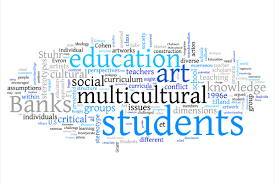Multicultural Considerations in Early Learning
May 17, 2023
This paper discusses the importance of understanding and honoring the diverse cultural backgrounds of children in early learning settings. It is essential for teachers and caregivers to be aware of potential linguistic, social, emotional, and cognitive differences that could influence a child's learning.
When planning activities or lessons, educators must consider how to reach all students regardless of their culture or language background. This includes making sure materials are culturally appropriate and avoiding stereotypes when teaching about different cultures. Additionally, it is important to create a safe space where children can feel comfortable expressing their own culture. Teachers should provide opportunities for discussion on different cultural topics so that all students can participate without fear of judgement or ridicule.

In regard to home-school partnerships, teachers should think carefully about how they communicate with families of different cultural backgrounds. This includes being aware of language barriers that may exist and providing alternative communication methods such as interpreters or translated documents.
Finally, educators should strive to create a curriculum that celebrates diversity by teaching about different cultures in an equitable way. By doing this, children can gain a greater appreciation for the varied backgrounds of their peers. This can help foster respect and understanding among young learners. Ultimately, by integrating multicultural considerations into early learning environments, teachers can provide students with a high-quality education experience which is tailored to meet the needs of all learners regardless of culture or language background.
Overall, it is important for educators to be conscious and respectful when working with children from diverse backgrounds. By being aware of the different cultural considerations and taking steps to meet the needs of all students, educators can ensure that each child is given an equal opportunity to succeed in their early learning environment.
By making multicultural considerations a priority in their teaching practice, educators can help create safe and inclusive environments that promote equity and respect for all students. It is essential to have a curriculum that celebrates diversity, provides opportunities for discussion on different cultures, and strives to bridge potential language barriers with families from diverse backgrounds. Such efforts will go a long way towards ensuring that each student has access to high quality education tailored to their own unique needs and cultural backgrounds.
